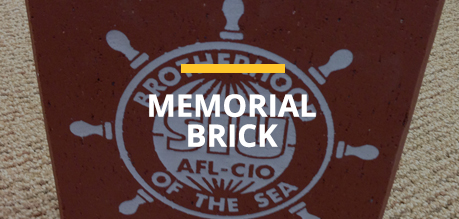The period between Christmas and New Year’s Day typically is slow in many workplaces, but not for Seafarers who are sailing aboard Matson’s newest ship.
The combination container roll-on/roll-off (ConRo) vessel Lurline was delivered Dec. 26, and SIU members climbed the gangway a day later. The union represents steward department mariners on the Lurline, which is sailing in the Jones Act trade.
“What better way to kick off 2020 than with new jobs on a new ship?” said SIU Vice President Contracts George Tricker. “As always, I am fully confident that the members aboard the Lurline will rise to the occasion and will do a typically outstanding job.”
Built buy union workers in San Diego at General Dynamics NASSCO, the Lurline is 870 feet long and has a beam of 114 feet. The ship has a deep draft of 38 feet and weighs in at more than 50,000 metric tons. It is one of Matson’s fastest vessels, with a top speed of 23 knots, helping ensure on-time deliveries in Hawaii from the company’s three West Coast terminals in Seattle, Oakland and Long Beach, California.
Recertified Steward Stephen Valencia said from aboard the vessel, “Things are going very well. We have a three-person steward department. The galley is very modern and functional, and the vessel overall is one of the most modern ships in the American fleet. Matson went all-out.”
Valencia particularly complimented the living quarters.
“The staterooms are the finest and most comfortable I’ve seen on a ship,” he said. “You have your own room, your own TV, your own bathroom. When I first started sailing (in 1974), there were four guys to a room and the bathroom was down the hall.”
Billed as the largest American-built ConRo, it’s the sixth Matson vessel named Lurline, dating to 1887. NASSCO also is building a second ConRo for Matson; that ship is expected to enter service in the third quarter of this year.
“We are proud to deliver the lead ship of the Kanaloa Class,” said Dave Carver, president of General Dynamics NASSCO. “It is an honor for our design and production teams to work on the latest Jones Act vessels that will support our customers and the communities they serve.”
According to Matson, “Both new Kanaloa Class vessels will have an enclosed garage with room for approximately 500 vehicles, plus ample space for rolling stock and breakbulk cargo. They will also feature stateof- the-art green technology, including a fuel-efficient hull design, environmentally safe double hull fuel tanks, fresh water ballast systems and the first Tier 3 dual fuel engines to be deployed in containerships serving West Coast ports. Both new vessels will enter service fully compliant with new International Maritime Organization (IMO) emission regulations going into effect January 1, 2020.” Under the latest IMO requirements for engine manufacturers, Tier 3 engines reduce the levels of particulate emissions by 40 percent and nitrogen oxide emissions by 20 percent, as compared to Tier 2 standards.
The Jones Act requires that cargo moving between domestic ports is carried aboard ships that are crewed, built, flagged and owned American. The century-old law, which has extensive bipartisan support, helps protect U.S. national, economic and homeland security. A newer study by PricewaterhouseCoopers found that the nation’s freight cabotage law helps sustain nearly 650,000 American jobs while contributing $154 billion to the nation’s economic growth annually.
###





Comments are closed.